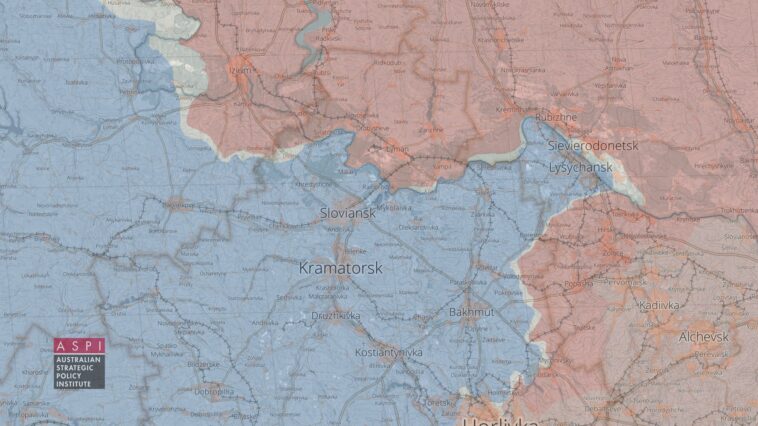Ukraine recaptures Zmiinyi Island. On June 30, the Ukrainian Armed Forces conducted massive strikes and destroyed a Russian garrison on Zmiinyi Island, forcing Russian forces to retreat. Commander-in-Chief of the Armed Forces of Ukraine Valeriy Zaluzhnyi released a video of Ukraine’s strikes on Zmiinyi Island. Self-propelled howitzers Bohdana had a key role in forcing Russian occupying troops out of the isle, Lieutenant General Zaluzhnyi said. It is unknown how big the occupying contingent was, what losses it took, and how much personnel and equipment Russia saved.
Zmiiynyi Island has a total area of only 0.2 square kilometers (approx. 0.08 square miles). It is more than 600 meters (0.37 miles) long and more than 500 meters (0.31 miles) wide. Yet it has strategic importance for control of the western part of the Black Sea. “If Russian troops succeed in occupying Zmiiny Island and install their long-range air defense systems, they will gain control of the sea, ground, and air in the north-west of the Black Sea and in southern Ukraine,” Ukrainian military analyst Oleh Zhdanov told BBC. Chief of the Main Intelligence Directorate of Ukraine’s Defense Ministry Kyrylo Budanov attributed similar importance to Zmiiny Island. Possession of the island secures control of the naval and partly air situation in the south of Ukraine, Budanov stated. It could also enable Russia to land tactical marine paratroopers in Transnistria, a territory it occupies.
Trying to justify a major defeat, Russia’s Defense Ministry said the withdrawal from the island was a “goodwill gesture”. “We demonstrated to the international community that the Russian Federation is not impeding UN’s efforts to organize a humanitarian corridor to allow the export of agricultural products from Ukraine,” the agency’s statement reads.
U.S. company Maxar Technologies released satellite images of Zmiinyi Island taken on June 30 after Russian forces retreated. “Smoke can be seen rising from burning vehicles and structures at several locations across the northernsection of the island,” Maxar said.
Military situation in east: tense situation in Lysychansk. On the Lysychansk axis, Russia has partial success. The Ukrainian Armed Forces repelled hostile assaults on the Kharkiv, Slovyansk, and Bakhmut axes. “On the Lysychansk axis, Russian forces attack the positions of Ukrainian troops near Lysychansk, and conduct an assault in the area of the Lysychansk oil refinery. They have partial success. Russian forces hold north-western and south-eastern parts of the plant,” the General Staff of the Ukrainian Armed Forces said in an evening report on June 30.
U.S. President Joe Biden announces new aid package to Ukraine worth USD 800,000. The package would include air defense systems and offensive weapons. Fifty allies stand ready to provide Ukraine with 140,000 pieces of antitank weapons, more than 600 tanks, about 500 artillery systems, more than 600,000 artillery ammunition, more HIMARS systems, anti-ship and air defense systems.
Explaining Ukraine podcast. Seven things to understand about contemporary Ukraine
What are the key elements of contemporary Ukraine? How can we understand its past 30 years? We discuss decentralization, generational changes, people vs power, the fluidity of the language situation, and other topics. Hosts: Volodymyr Yermolenko, Ukrainian philosopher, chief editor of UkraineWorld.org, and Tetyana Ogarkova, Ukrainian scholar and journalist, in charge of international outreach at the Ukraine Crisis Media Centre.
Lithuania-Russia tensions over Kaliningrad: is it blockade? Ukraine in Flames #112
After Lithuania blocked the rail transit of transport steel or iron ore across EU territory to the Russian exclave of Kaliningrad, Russia started escalating tensions with the Baltic state. Now, the Kremlin is openly threatening Lithuania with “serious consequences”. However, the country itself says it’s just following EU guidelines regarding sanctioned goods over Russia’s war in Ukraine.
Watch Ukraine in Flames #112 to learn how Russia escalates tensions with a NATO member and what consequences it may have.
Speakers:
Zygimantas Pavilions, Member of the Lithuanian Parliament, Deputy Chair in European Affairs Commmittee
Andrius Kubilius, Member of the European Parliament from Lithuania, ex-Prime Minister of Lithuania

